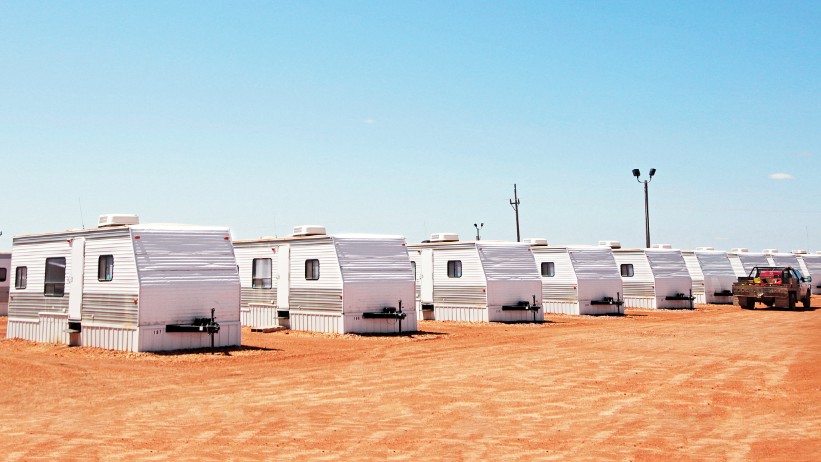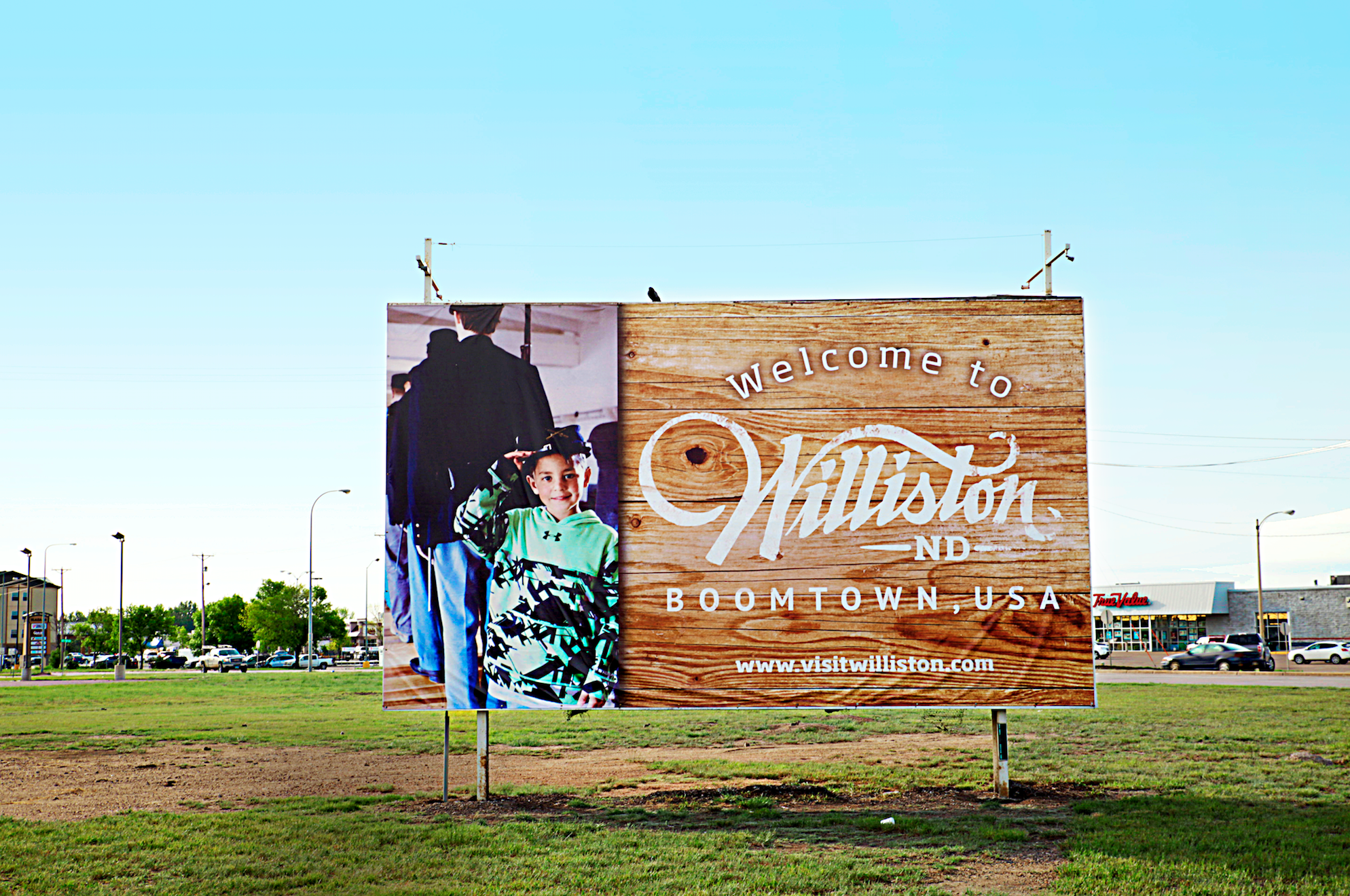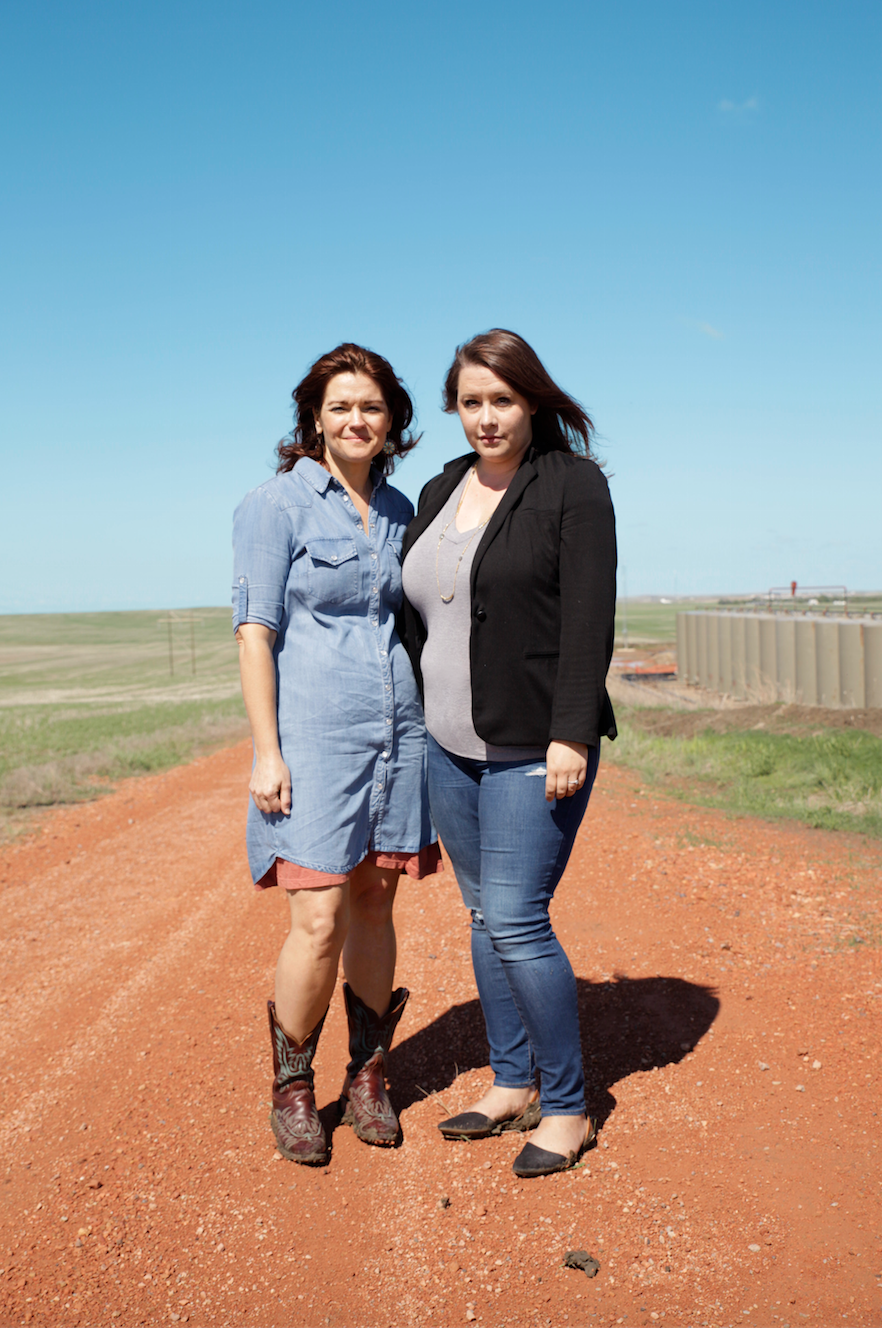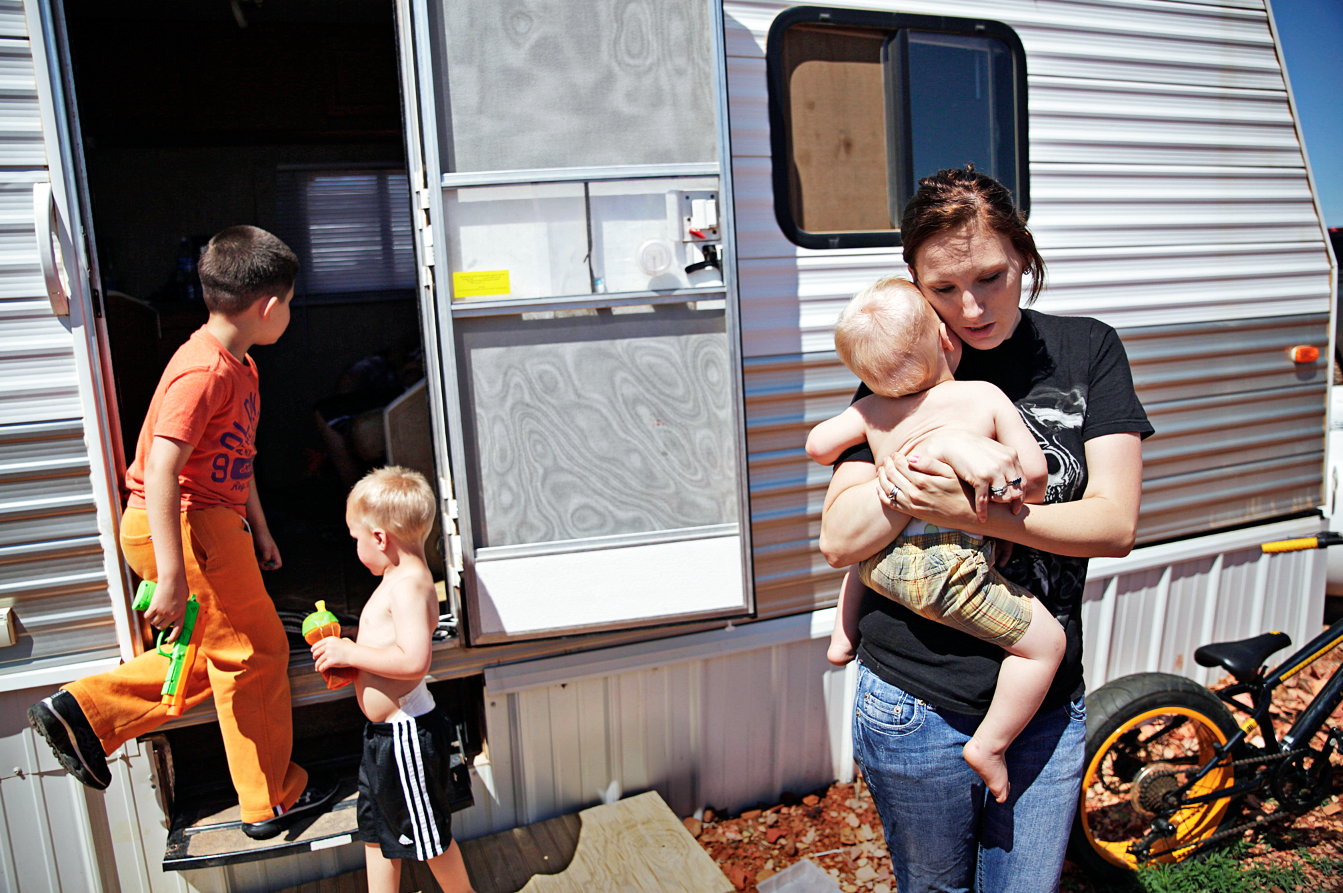Crude Awakening: The Sex Trafficking Crisis That's Right in Our Backyard
The oil boom in North Dakota has brought tens of thousands of newcomers and, with them, an insidious crime that residents never expected. In the first part of Marie Claire's series on sex trafficking in the U.S., we go behind the scenes with the locals—including two women instrumental in getting groundbreaking legislation passed—who banded together to save their state.


Highway 85 cuts 112 miles north through fields filled with wheat, corn, and alfalfa, skating along the eastern edge of Theodore Roosevelt National Park in North Dakota. The rocky buttes and mixed-grass prairie that once enchanted the former president are punctuated with oil derricks, their Tyrannosaurus-shaped heads bobbing slowly up and down across the horizon. Semitrucks lumber along, rattling compact cars as they pass through the Bakken, an oil patch that spans some 25,000 square miles and covers much of western North Dakota, eastern Montana, and the southern parts of two Canadian provinces. (Bakken was the surname of the farmer who once owned part of the land.) At the edge of town, a billboard reads: "Welcome to Williston, ND. Boomtown, USA."
Here, in this previously quaint farming community, signs of the state's oil boom are everywhere. The once-cozy Main Street has been ripped open by road construction. Banners pinned to the sides of hotels, apartment complexes, big-box stores, and chain restaurants announce grand openings. A new strip club stands two doors down from the remnants of a Christian bookstore. On the eastern side of town, a $70 million, 234,000-square-foot indoor recreation center, partially funded by the oil industry, contains a golf simulator and pseudo-surfing pool.

Oil isn't new to North Dakota, but the development of horizontal drilling and hydraulic fracturing, or "fracking," opened the rich Bakken shale deposit to thousands of additional wells, creating more than 100,000 new, high-paying jobs since April 2009. Tens of thousands of people from all over the country—the vast majority of them men—have flocked to Williston and the neighboring oil-patch towns of Watford City, Minot, and Dickinson, among others, seeking work as foremen, engineers, welders, electricians, mechanics, drillers, and derrick hands. Williston alone has seen its population more than double, from fewer than 15,000 people in 2010 to at least 30,000 today. The actual number of residents may be even higher, as the Census doesn't count transient workers—locals say they think the population was closer to 60,000 at the end of last year.
North Dakota now has the biggest concentration of men in any state except Alaska. Many maintain a six-weeks-on, two-weeks-off schedule that sees them living in temporary housing developments known around here (and popularized in the media) as "man camps"—seemingly endless rows of identical squat, white trailers and privately owned RVs, some so large they've been dubbed "Taj Mahals." The camps range from a few dozen men parking their RVs with permission on a farmer's land to strictly regulated compounds that house and feed more than 1,000 workers—no guns, drugs, or women allowed. A rough-and-tumble vibe pervades, with as many as four men sharing 240-square-foot trailers, and property managers struggling to rein in raucous parties, fights, gunplay, and drug use (both meth and heroin use have spiked in the area—drug-related arrests increased by 66 percent between 2009 and 2013). The few women living among the men share stories of life outnumbered. "You feel like a piece of meat," says Kaitlin Baxter, 24, who moved from Missouri to Prairie View Park, a sprawling 1,000-person camp in Watford City, with her husband and three sons. Texas native Morgan Greer, 20, says she's had men follow her around a grocery store—one went as far as to enter the women's restroom, but she called for help. "I feel safe," she insists, "but I'm packing [heat] the majority of the time."
"Many women around here carry guns—maybe for good reason. This modern-day gold rush has brought the problems of the old Wild West: crime, drugs, and sexual violence."
Many women around here carry guns—maybe for good reason. This modern-day gold rush has brought the problems of the old Wild West: crime, drugs, and sexual violence. Overall, violent crime, including murder, aggravated assault, forcible rape, and robbery, increased by 125 percent between 2005 and 2013, according to the state's Uniform Crime Reports. In Williston, calls to the police went from 4,163 in 2006 to 15,954 in 2011; in nearby Watford City, from 41 to 3,938 in that same time frame. It's gotten so bad that earlier this year, the FBI announced it would open a new permanent office in Williston.
It was against this backdrop that officials in the Bakken started to worry about a different kind of crime. In the spring of 2012, the U.S. attorneys for both North Dakota and Montana gathered law enforcement—everyone from local police to the FBI, the Border Patrol, and the Department of Homeland Security—at a meeting in Glasgow, Montana, where they learned conditions were ripe for catastrophe. The small-town police departments were overwhelmed by day-to-day calls, forcing detectives off larger investigations and back on the streets to respond to bar fights and patrol for drunk drivers. Social services, too, were overrun. Williston's battered-women shelter reported a 300 percent increase in victims between 2009 and 2011. Workers there were in triage mode, with no time to define what they were seeing or identify trends among victims. Those factors, combined with the large male population newly flush with cash, meant it was open season for opportunists. "The threat was organized crime: drug trafficking, human trafficking, fraudsters, scam artists," says Tim Purdon, North Dakota's U.S. attorney from 2010 to 2015, now a partner at Robins Kaplan LLP in Bismarck. "We knew the threat of sex trafficking was there, but did we have any evidence that it was actually going on?" They would soon.
In November 2013, Jordan (whose last name is withheld to protect her privacy) moved to Williston with a boyfriend who had taken a job in the oil fields. At 18, she wanted a "new start," she says, away from New York, where she had been abused as a child and lived in and out of the foster care system. "I was so in love with this boy," Jordan says. "Ready to do anything." But after a few months, their relationship crumbled: He lost his job, they started doing meth, and he started mentally and physically abusing her. Eventually, he became her first pimp, selling her to his boss when he took a new job as a mechanic. High at the time, Jordan doesn't know how much money her ex made from selling her.
Get exclusive access to fashion and beauty trends, hot-off-the-press celebrity news, and more.

After she left him, she sold herself on Backpage.com, a classified website notorious for prostitution, earning money to keep a roof over her head. "I felt like that was my only option at the time," she says. "What else was I going to do, lie on the side of the road until I die?" She also spent a month under a pimp's control, circling around oil towns with two other women, one from Milwaukee, the other from Atlanta. "[The pimp] had 10 or 11 junky flip phones and 10 or 11 ads up for the three of us," Jordan says. The going rate was $300 an hour. "It was almost fun," she says. They went to the mall, got their nails done, stayed in nice hotels, ate good food. "I guess that had to do with the fact that we were making [him] so much money."
Around that same time, law enforcement began conducting sting operations known as Operation Vigilant Guardian. Detectives posed as someone selling a 14-year-old girl on classified websites and arrested interested buyers. One weekend in Williston, police arrested three men; two weeks later, they arrested 11 in Dickinson, a town of roughly 25,000 located about two hours away. A 34-year-old named Clayton Lakey was arrested when he showed up at a hotel after making arrangements to have sex with a 13-year-old girl, for which he agreed to pay $250 for one hour. He also offered to pay $5,000 for a 10-year-old. (Lakey is now serving five years in federal prison.) Police had to shut down the sting ahead of schedule because Dickinson ran out of jail space. "When you identify that level of demand for commercial sex with underage girls, you're a fool if you don't think there's a supply out there," Purdon says.
"When you identify that level of demand for commercial sex with underage girls, you're a fool if you don't think there's a supply out there."
He calls the stings the "seminal events" in galvanizing support in the area for the fight against trafficking. Fourteen arrests may not sound like an emergency to city dwellers, but to many in this rural area, it was devastating. "Dickinson is a sweet little town … not some crime-ridden place," Purdon says. "That these dudes decided the best way to spend their weekend was to go on Backpage and try and arrange commercial sex with a pimp for a 14-year-old girl—that was incredibly sobering to me. … I took a step back and said, 'Oh, my God, what am I, what is the U.S. attorney's office, going to do about this?'"
His alarm was well-founded—not only did all signs point to a burgeoning crisis, but the state was uniquely ill prepared to deal with it as well. Victims here were at a huge deficit: There were no social-service organizations or advocacy groups specifically focusing on the issue in the state and no safe houses or shelters dedicated to trafficking victims. (Nationally, there are only 529 beds in shelters designated for trafficking victims; North Dakota doesn't have any.) Even the federal government was concerned. In September 2013, the U.S. Department of Health and Human Services identified two towns in the Bakken, along with four other locations—Boston, Houston, Atlanta, and Oakland, California—as places in need of support to combat trafficking. And then, the final blow: In September 2014, Polaris, a Washington, D.C.–based anti-trafficking nonprofit that rates states based on the quality of their legal framework for prosecuting trafficking and helping victims, ranked North Dakota as one of the two worst states. (The other is South Dakota.) "If you're working in the oil industry, you see what's happening here in terms of a boom," says Christina Sambor, a lawyer turned anti-trafficking activist who lives in Bismarck. "But if you work in human services, you view it in terms of a natural disaster."
As anyone who's lived through one knows, there's nothing like a natural disaster to bring a community together. Key stakeholders in North Dakota—including five nonprofits, law enforcement, prosecutors, social workers, and tribal representatives—decided to combine forces. Together, they formed a new anti-trafficking coalition called FUSE (a Force to end hUman Sexual Exploitation) and named Sambor coordinator. At the kickoff event, a statewide summit on human trafficking in Bismarck in November 2014, some 200 attendees heard from major players on the front lines—cops, shelter workers, and a trafficking survivor. They walked away fired up, their mission clear: Quantify the scope and scale of trafficking in the area, raise public awareness, increase victims services, and institute forward-thinking legislative and law enforcement practices to fight the problem head on. "You could feel the energy in the air," Sambor says. "We were sitting around the table, just like, 'This has the potential to be huge.' " But in a state like North Dakota, where, as Sambor says, "The word pimp is so far outside residents' frame of reference," it would be an uphill climb. "There had to be a fundamental paradigm shift in how people view the commercial sex industry," she says. "It was going to be a challenge."
Sambor, 32, was born and raised in Bismarck. Her mother, who worked in corrections, taught her that she could be whatever she wanted to be. So she went to law school outside of Los Angeles, worked in Washington, D.C., with Polaris, and looked forward to an exciting career taking on big issues in big cities. But Sambor graduated in the middle of the recession and found her options limited, so she moved back to Bismarck to work in a private practice. To her surprise, those big-city issues she dreamed of tackling were right before her eyes.
On a warm day this June, Sambor and Erin Ceynar, 41, a North Dakota native and fundraiser for the Women's Foundation of Minnesota, are touring the Bakken, trading stories of junkyards stacked with abandoned RVs and truck drivers who toss bottles of urine out the window. Ceynar's throat clenches up. "The land is just disposable," she says. "If you don't really care for the land, you don't really care for women."
Ceynar grew up in the wide-open spaces between Watford City and Williston, working oil jobs on summers off from the University of North Dakota. Unlike her previous jobs at Walmart and KFC, "I had autonomy, I had discretion, I had my own truck." One day, in 1994, while Ceynar was recording data at a site, an employee threatened to assault her in a nearby field. Holy shit, she thought. I'm gonna get raped right now. Instead, another coworker intervened. But when Ceynar told her boss about it, the employee wasn't punished. She was, relegated to counting pipes alone in a warehouse for her own protection.

After graduation, she fled to politically progressive Minneapolis. Working on an anti-trafficking campaign called MN Girls Are Not For Sale, she interviewed several survivors at Breaking Free, an anti-trafficking nonprofit. "Every victim I talked to had been trafficked to my hometown of Williston," she recalls. One girl described being sold for sex at a hotel where Ceynar had done 4-H exhibits as a child. "It dawned on me at that point that I needed to pay attention to this," she says.
Ceynar e-mailed Purdon, with whom she'd discussed women's issues in the state over the years, to see how she could help. He connected her with Sambor, who had been talking with him about combating trafficking, too. The two women started exchanging e-mails and eventually met face-to-face in Minneapolis in the fall of 2013 at a conference on trends in victims services hosted by Ceynar's employer. "She was a kindred spirit," Sambor says. "I was looking to do something new, and then I met Erin and just thought, Oh, this is what makes her tick, too." They decided they had to develop some sort of coordinated effort, where all the major players could work on anti-trafficking initiatives. "North Dakota was just so in need of funding, of programs—everything," Sambor says. The first step was to increase public understanding of what it means to be trafficked.
"Victims are more often women who were sexually abused at a young age and sold for the first time by someone they trust, like a parent or boyfriend."
Victims of trafficking need not be transported anywhere—they must only have been induced by force, fraud, or coercion (including tactics like withholding drugs) to participate in commercial sex. (Minors must only be induced, as those under age 18 cannot legally consent to sex.) By that definition, anyone being sold by a pimp who controls their comings and goings and cash supply is being trafficked. Victims are more often women who were sexually abused at a young age and sold for the first time by someone they trust, like a parent or boyfriend. "Very many of them are not Laura Ingalls Wilder bounding through the prairies waiting to be snatched up by some dark force," says U.S. Sen. Heidi Heitkamp, D-ND, who has long championed anti-trafficking measures. "They're on the street, they've already been marginalized, and they've probably already been victimized."
Women who fit the victim profile—no jobs, money, connections, or any reason to be there—started showing up in the Bakken. "Kids might get attracted to going to New York or L.A., but you're not going to be like, 'North Dakota: That's the place for me,'" Sambor says. "So we started to [ask], How do these women arrive in rural North Dakota from metropolitan areas? Could it be entrepreneurs coming to access the market? Sure. But is it more likely something more sinister and something involving exploitation? Yes."
Employees at women's shelters in the area started reporting victims unlike any they'd ever seen: a 16-year-old sold by her mother for drug money, a young woman with "property of" and a man's name tattooed across her chest. Women posing as victims even started using the shelters to recruit others to work for their pimps. A police sergeant monitored local Backpage.com ads for four months and found 70 percent of the women had been for sale in a different state the previous week. "They were coming from Milwaukee, from the Twin Cities, from Chicago, from Mexico and south of there, and elsewhere in the country," says North Dakota Attorney General Wayne Stenehjem. "Traffickers bring these women in, and they will be there for a little while—and then they move them out and bring in a new group."
A few big arrests brought national attention to the cause. In June 2014, Levell Durr of Wisconsin was arrested on charges of transportation for illegal sexual activity in Bismarck. In court, an FBI special agent testified that Durr had trafficked three women to North Dakota, used drugs and physical violence to keep them compliant, and forced them to have sex for money and then turn it over to him, kissing his hand when they did. At one point, the FBI agent said, Durr kept a girl in a dog kennel for days for breaking one of his rules. Three months later, California natives Trina Nguyen and Loc Tran were accused of luring women from their home state by promising large amounts of money for work in massage parlors in Dickinson and Minot. The parlors were actually brothels, and an FBI affidavit alleges Nguyen and Tran used their earnings to pay for Backpage ads. Then, in December, a Williston resident named Keith Graves, who came from California, was charged in federal court with sex trafficking by force or coercion.
"Employees at women's shelters in the area started reporting victims unlike any they'd ever seen: a 16-year-old sold by her mother for drug money, a young woman with "property of" and a man's name tattooed across her chest."
Armed with these stories and more, FUSE finally had the ammo it needed to make the case to the legislature. Working at a feverish pace required both by the high stakes of the problem and the fact that North Dakota's legislature meets only once every two years, the coalition drafted and, in April of this year, successfully lobbied the state's conservative government to pass a suite of trafficking bills. Among the wins was a Safe Harbor law, which grants immunity to minors who engage in commercial sex (21 other states have adopted similar policies; without such laws, kids could be charged as criminals), and a vacatur remedy—a legal tool that permits victims of any age to expunge prostitution convictions if they were under pimp control, allowing them to more easily apply for jobs and housing. The state also appropriated $1.25 million to strengthen social services for trafficking victims. The package was lauded as model legislation—among the nation's most progressive—a surprising move from a state that, as Sambor says, is not typically a trailblazer. "When you're target number one for this problem, you need to have the most aggressive package that you can come up with," Heitkamp says. "It speaks to the culture of North Dakota, which is: You are not going to be selling boys and girls in our backyard without us all pulling together to stop it."
While the frenzied work was underway in North Dakota, Congress was working on a legislative package of its own. Introduced in the U.S. Senate in January and signed into law by President Barack Obama in May, the Justice for Victims of Trafficking Act was designed to crack down on traffickers while improving services for victims. It requires the Department of Justice to better train law enforcement and prosecutors who handle trafficking cases, allows for johns to be prosecuted just as harshly as traffickers, punishes those (including website operators) who knowingly advertise for and profit from commercial sex with minors, and creates a mandatory $5,000 fine for offenders (to establish a victims' fund).
The package provided a rare moment of bipartisanship in Congress, sailing through the Senate by a vote of 99–0 and the House 420–3. "There's not much controversial about what we want to do," says U.S. Rep. Kristi Noem, R-SD, who cosponsored the House's version of the package. "When I say to another member, 'So you don't believe children shouldn't be victimized?' … Those are things that Republicans and Democrats can all agree on." That accord came, at least in part, thanks to growing consensus that women in the sex trade—whether there by choice or by force—are people in need of social services, not prison time.

Rob Fontenot, who describes himself as "a big, scary-looking dude with a beard," is not what you'd expect a cop to look like. As an undercover agent for North Dakota's Bureau of Criminal Investigation, his appearance has helped him during trafficking stings. One day, in the spring of 2014, he posed as a client and answered Jordan's Backpage.com ad. By then, Jordan had left her pimp and was selling herself online. When Fontenot knocked on her hotel room door, she screened him through the peephole and thought, Easy. She opened the door wearing a crop top and thong, and tried to give Fontenot a hug. "He walks in and he's like, 'I need you to put clothes on,'" Jordan says. "I was so embarrassed—I didn't peg him as a cop."
Fontenot, who serves on FUSE's advisory committee and spoke at the launch event, answered the ad as part of a "knock and talk" operation. Unlike in prostitution stings that aim to arrest sex workers, Fontenot's goal during these encounters is to make sure the women are over 18, doing all right, and have access to help if they need it. "I try to put them at ease right away," he says. The hard part, he adds, is that women have been taught—by traffickers, but also by negative experiences with police—that law enforcement is the enemy. "Every time they've encountered cops, they've gone to jail," he says. "So it's kind of ingrained in them to be distrustful."
Just a couple years ago, Fontenot says he would have seen women like Jordan as criminals rather than victims. But in the past two years, through conversations with FUSE members and trainings that encourage cops to view people in prostitution as individuals who might need help, his perspective has changed. "My personal opinion is that I won't arrest girls for that," Fontenot says. "I just won't do it."
"I am not worth no $300 an hour—I am priceless."
Because Jordan wasn't arrested when Fontenot knocked on her door, she had a chance at another new start. At a client's house a month or so later, she decided she'd had enough. She called a survivor advocate named Windie Lazenko, whose business card she'd kept on hand just in case, telling her: "I'm over it! I need to leave!" Lazenko helped Jordan get out of "the life." Today, back in New York, she's working to put her own life back together. "I know my worth now," Jordan says with a sideways grin. "I am not worth no $300 an hour—I am priceless." This spring, at age 20, she earned her high school diploma.
This article appears in the September issue of Marie Claire on newsstands now
Kayla Webley Adler is the Deputy Editor of ELLE magazine. She edits cover stories, profiles, and narrative features on politics, culture, crime, and social trends. Previously, she worked as the Features Director at Marie Claire magazine and as a Staff Writer at TIME magazine.
